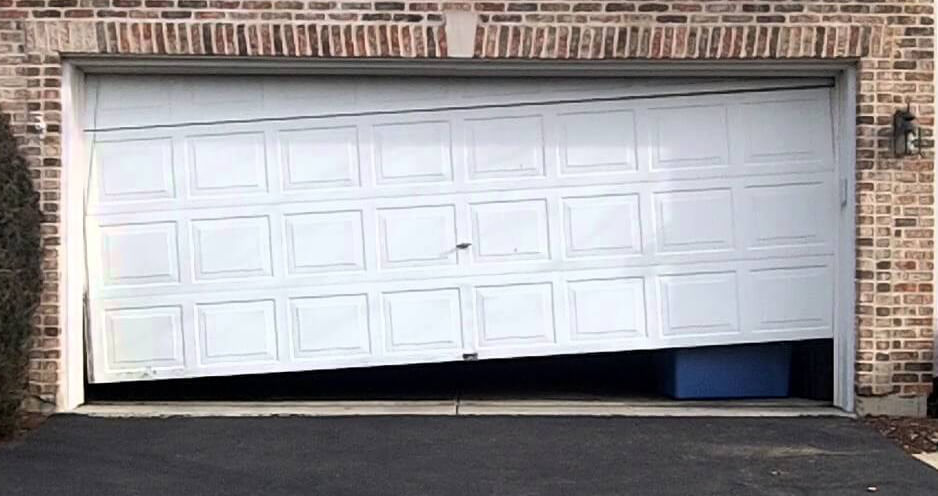
Hey there, fellow vacuum enthusiasts! Ever had that frustrating moment when your vacuum cleaner decides to throw a tantrum and just refuses to suck up those stubborn crumbs and pet hair? We’ve all been there! A malfunctioning vacuum can turn your cleaning routine into a real hassle. But fear not, because we’re about to embark on a journey of troubleshooting and repairing that trusty cleaning companion of yours.
The Importance of a Functional Vacuum Cleaner
Let’s face it – a vacuum cleaner is the unsung hero of household chores. From tackling the notorious dust bunnies to dealing with accidental spillages, it’s our go-to weapon in the battle against dirt and grime. But what happens when this superhero takes an unexpected vacation? Chaos, that’s what!
A malfunctioning vacuum isn’t just an inconvenience; it’s a disruptor of peace and cleanliness. Picture this: You’re about to host a cozy get-together in your Brooklyn, New York apartment, and your vacuum decides it’s the perfect time to call it quits. Now, you’re left with unsightly carpets and a living room that looks like it hosted a tumbleweed parade.
Common Issues Leading to Malfunction
Before we dive into the nitty-gritty of troubleshooting, let’s identify the usual suspects behind a vacuum cleaner’s rebellion. Is it the power source playing hide-and-seek, a rebellious motor, or perhaps a belt that’s seen better days? Understanding these culprits is the first step in our mission to restore order to the cleaning chaos.
So, what are these troublemakers?
- Power Play: Check that power outlet – it might be giving your vacuum the silent treatment.
- Suction Sabotage: Clogs, worn-out brushes, or tangled rollers – the vacuum’s worst enemies.
- Motor Mayhem: Odd sounds and electrical gremlins might be haunting your motor.
- Belt Blues: A worn-out belt can turn your vacuum into a drama queen on the cleaning stage.
- Electrical Hiccups: Faulty switches and damaged cords – the silent disruptors of your cleaning symphony.
Purpose of Troubleshooting and Repair
Now that we’ve pinpointed the usual suspects, why bother with troubleshooting and repair? Well, imagine you’re in a fix, and your vacuum is the only ally in your cleaning crusade. Knowing how to troubleshoot and repair can be the difference between a victorious cleaning conquest and a messy defeat.
So, what’s the game plan?
- Save Money: No need to rush to the store for a new vacuum – fixing the old one is cost-effective.
- Extend Lifespan: A little TLC can breathe new life into your trusty cleaning companion.
- Empower Yourself: Become the hero of your cleaning saga, armed with a screwdriver and determination.
Now that we’ve set the stage, grab your toolkit, put on your DIY superhero cape, and let’s rescue your vacuum cleaner from the brink of retirement!
Safety Precautions
Before we plunge into the world of screws and circuits, let’s talk safety. Dealing with appliances, especially those with electrical components, requires a bit of caution to ensure both your well-being and the vacuum’s.
Unplug the Vacuum Cleaner
First things first – let’s cut the power. Unplug that trusty cleaning sidekick of yours before attempting any diagnostics or repairs. A shock-free cleaning experience is always a win.
Check for Exposed Wires
Nobody likes a shocking surprise (unless it’s a surprise party). Inspect the power cord for any exposed wires. If you spot any, it’s time for some cord management. Tape it up or, better yet, replace the cord if needed.
Ensure Proper Ventilation
Vacuum cleaners, like humans, need to breathe. Overheating is a common issue, especially if you’ve been putting your vacuum through a cleaning marathon. Check for blocked vents and make sure the motor can cool down properly.
Now that we’ve secured the safety perimeter, let’s dive into the heart of the matter.
Preliminary Inspection
Before dismantling your vacuum like a seasoned engineer, let’s start with a basic overview. Think of it as a preliminary health check for your cleaning buddy.
Examine Power Source
- Check Power Outlet: Is the power outlet playing hard to get? Ensure it’s functioning properly by testing it with another device.
- Inspect Power Cord: Give the power cord a once-over. Any frayed edges or suspicious kinks? If yes, it might be time for a new one.
Evaluate Vacuum Cleaner Filters
- Remove and Clean Filters: Filters are the unsung heroes of a vacuum’s respiratory system. Take them out and give them a good shake or wash, depending on the type. Clogged filters choke your vacuum’s efficiency.
- Replace Damaged Filters: If your filters resemble a war zone, it’s time to surrender and replace them. New filters mean a breath of fresh air for your vacuum.
Armed with this knowledge, you’ve laid the groundwork for a successful vacuum revival. Stay tuned as we delve deeper into the abyss of troubleshooting. Remember, a clean vacuum is a happy vacuum!
Suction Issues
Now, let’s tackle the real MVP of any vacuum cleaner – suction. When your vacuum starts slacking in the suction department, it’s time to put on your detective hat and unravel the mystery.
Check for Clogs
- Inspect Hose and Attachments: Vacuum hoses and attachments are like the arteries of your cleaning companion. Check for any obstructions or foreign objects that might be causing a traffic jam.
- Examine the Vacuum Cleaner’s Base: Flip that bad boy over and inspect the base. You’d be surprised how often a rogue Lego or a tangled mess of hair can turn your vacuum into a silent protester.
Clean or Replace Brushes and Rollers
- Remove Debris and Hair: Rollers and brushes do the dirty work, quite literally. But over time, they accumulate a trophy of debris. Get in there, grab some scissors, and liberate them from the mess.
- Lubricate Moving Parts: A little WD-40 magic goes a long way. If your rollers or brushes seem reluctant to spin, a touch of lubrication can make them glide like figure skaters.
Suction issues can be as simple as a stubborn Cheerio lodged in the hose or as complex as a worn-out motor. But fear not, because you’re armed with a vacuum toolkit and the determination of a cleaning superhero.
Motor Troubleshooting
The motor – the beating heart of your vacuum. When it starts acting up, strange noises and erratic behavior can turn your cleaning routine into a horror show. Let’s tame that motor beast.
Listen for Unusual Sounds
- Identify Abnormal Noises: A healthy motor hums; a distressed one screeches. Listen carefully for any unusual sounds – it might be the motor’s cry for help.
- Check for Loose or Damaged Components: Loose screws or damaged parts can turn your motor into a rock band drummer gone rogue. Secure any loose components and replace damaged ones.
Inspect the Vacuum Cleaner’s Motor
- Remove Motor Housing: Time for a peek under the hood. Unscrew the motor housing and unveil the magic within.
- Test for Electrical Continuity: Grab your multimeter and check for electrical continuity. If the numbers are dancing like they’re at a disco, there might be an issue.
A misbehaving motor is a common woe, but with a bit of know-how, you can bring it back from the brink. Stay tuned as we journey further into the realm of vacuum voodoo and unravel the mysteries of belts and switches.
Belt Inspection and Replacement
Ah, the unsung hero that keeps the cleaning show running smoothly – the belt. It’s easy to overlook, but when it decides to retire, your vacuum’s cleaning prowess takes a nosedive. Let’s dive into the belt saga and learn how to keep it in top-notch condition.
Locate the Vacuum Cleaner Belt
- Identify the Belt’s Position: Belts aren’t fashion accessories for your vacuum, but they are crucial. Locate the belt – it’s usually connected to the motor and the rotating brushes or rollers.
- Examine for Wear and Tear: Belts endure quite the workout during their tenure. Check for any signs of wear and tear – fraying, cracking, or a general lack of elasticity. If it looks tired, it’s time for a replacement.
Replace the Vacuum Cleaner Belt
- Purchase a Compatible Belt: Not all belts are created equal. Check your vacuum’s manual or the manufacturer’s website for the correct belt specifications. Trust me; your vacuum will thank you.
- Follow Manufacturer’s Instructions for Replacement: Each vacuum has its own belt replacement dance. Consult the manufacturer’s instructions – they’re like the GPS guiding you through the labyrinth of vacuum internals.
Electrical Issues

Your vacuum cleaner may not be sending smoke signals, but electrical issues can certainly throw a wrench into your cleaning routine. Let’s unravel the mysteries of switches and cords.
Test Power Switch
- Use a Multimeter to Check Continuity: The power switch is the puppet master behind your vacuum’s performance. Grab a multimeter, set it to continuity mode, and test if the switch is conducting the electrical orchestra as it should.
- Replace the Switch if Necessary: If the switch is playing hooky, it’s time for a replacement. Consult your vacuum’s manual or the manufacturer for a compatible switch and follow the switcheroo instructions.
Examine the Cord and Plug
- Look for Exposed Wires: A peek at the cord and plug might reveal some hidden dramas. Look for exposed wires – they’re the rebels causing electrical chaos.
- Repair or Replace Damaged Sections: If you spot any wire rebels, tame them with some electrical tape. For more severe cases, consider replacing the cord altogether.
Bag or Bin Issues
We’ve navigated the circuits and wrestled with the motor, but now it’s time to confront a more mundane yet crucial aspect of your vacuum – the bag or bin. When your vacuum starts sounding like it’s gasping for air, these components might be staging a silent protest.
Check for Fullness
- Empty or Replace the Vacuum Cleaner Bag: For bagged vacuums, a full bag can be the culprit behind your vacuum’s suffocation. Empty it regularly or replace it if it’s on the brink of bursting.
- Clean the Dustbin for Bagless Models: Bagless wonders have their dustbins as heroes. Empty the bin and give it a thorough cleaning to ensure it’s not harboring a secret stash of dust bunnies.
Ensure Proper Installation
- Reinstall the Bag or Bin Securely: It’s not just about having a bag or bin; it’s about having it in the right place. Ensure it’s securely installed, and there are no loose ends – we’re aiming for a vacuum, not a confetti cannon.
- Verify Correct Placement: Double-check your user manual for the correct placement of bags or bins. Misplacing them can lead to inefficient suction and a vacuum cleaner that’s more confused than a cat in a room full of laser pointers.
Now that we’ve decluttered the airflow pathway, it’s time to put the puzzle back together.
Reassembly and Testing
The moment of truth has arrived. With tools in hand and newfound knowledge, it’s time to reassemble your vacuum cleaner and put it through a rigorous test to ensure it’s ready to tackle dust and debris like a champ.
Put the Vacuum Cleaner Back Together
- Follow Reverse Order of Disassembly: Think of it as vacuum origami. Follow the reverse order of your disassembly, ensuring each part clicks, snaps, or screws back into its rightful place.
- Ensure All Components Are Securely in Place: Jiggly parts are a no-no. Shake your vacuum (not literally) to ensure all components are securely in place. Loose fittings can lead to inefficiency and, let’s face it, a somewhat comical vacuum malfunction.
Test the Vacuum Cleaner
- Plug It In and Turn It On: The moment of reckoning. Plug in your resurrected vacuum, turn it on, and listen for the sweet hum of a revitalized cleaning companion.
- Verify Functionality and Performance: Run a quick test on various surfaces to ensure your vacuum is back in the cleaning game. Check for suction strength, brush rotation, and any unusual noises.
Encourage Prompt Professional Assistance if Needed
While DIY adventures are thrilling, there’s no shame in seeking professional help when the going gets tough. Manufacturers and technicians exist to provide support, ensuring your vacuum gets the expert care it deserves.
In conclusion, whether you’re a seasoned DIY guru or a rookie wielding a screwdriver for the first time, troubleshooting and repairing a malfunctioning vacuum is a rewarding endeavor. Your cleaning sidekick is now back in action, ready to face the challenges of dust and dirt with renewed vigor.
So, here’s to a cleaner, tidier home, and to you – the unsung hero behind the scenes. Happy vacuuming, and may your cleaning adventures be ever triumphant!
Frequently Asked Questions (FAQs)
Q1: Why is my vacuum cleaner not turning on?
A: Several factors could cause this. Start by checking the power outlet, cord, and power switch. If everything seems fine, there might be an issue with the motor or electrical components that require professional attention.
Q2: How often should I clean or replace the filters?
A: It depends on usage, but a general rule is to clean or replace filters every 1-3 months. If you have pets or vacuum frequently, more frequent maintenance may be necessary.
Q3: What should I do if my vacuum has weak suction?
A: Check for clogs in hoses or attachments, clean brushes and rollers, and ensure the bag or dustbin is not full. If the issue persists, inspect the filters and, if necessary, replace them.
Q4: How do I know if my vacuum belt needs replacement?
A: Signs of a worn-out belt include reduced suction, strange noises, or visible wear. If the belt looks frayed or cracked, it’s time for a replacement. Follow your vacuum’s manual for the correct belt specifications.
Q5: Can I use any replacement parts for my vacuum?
A: It’s best to use parts recommended by the manufacturer. Using compatible and quality replacement parts ensures optimal performance and prevents potential damage to your vacuum.
Q6: What should I do if my vacuum cleaner smells bad?
A: Unpleasant odors often stem from a dirty bag or dustbin. Empty and clean them regularly. Additionally, check and clean filters, and inspect the brush or roller for trapped debris.
Q7: Is it safe to lubricate moving parts of my vacuum?
A: Yes, it’s safe to lubricate moving parts like rollers and brushes. Use a silicone-based lubricant sparingly to ensure smooth operation. Avoid using oils that can attract dust.
Q8: How can I store my vacuum cleaner to prolong its life?
A: Store your vacuum in a cool, dry place. Avoid extreme temperatures, and gently wrap the cord to prevent damage. Regularly clean and maintain the vacuum for optimal performance.
Q9: When should I consider seeking professional help for my vacuum issues?
A: If you encounter complex motor problems, electrical issues beyond basic troubleshooting, or if DIY efforts prove unsuccessful, it’s advisable to consult the manufacturer’s customer support or seek assistance from a professional technician.
Q10: Can I wash my vacuum filters?
A: Yes, but it depends on the type of filter. Check your vacuum’s manual for guidance. Some filters are washable, while others may need replacement. Always ensure filters are completely dry before reinserting them.






